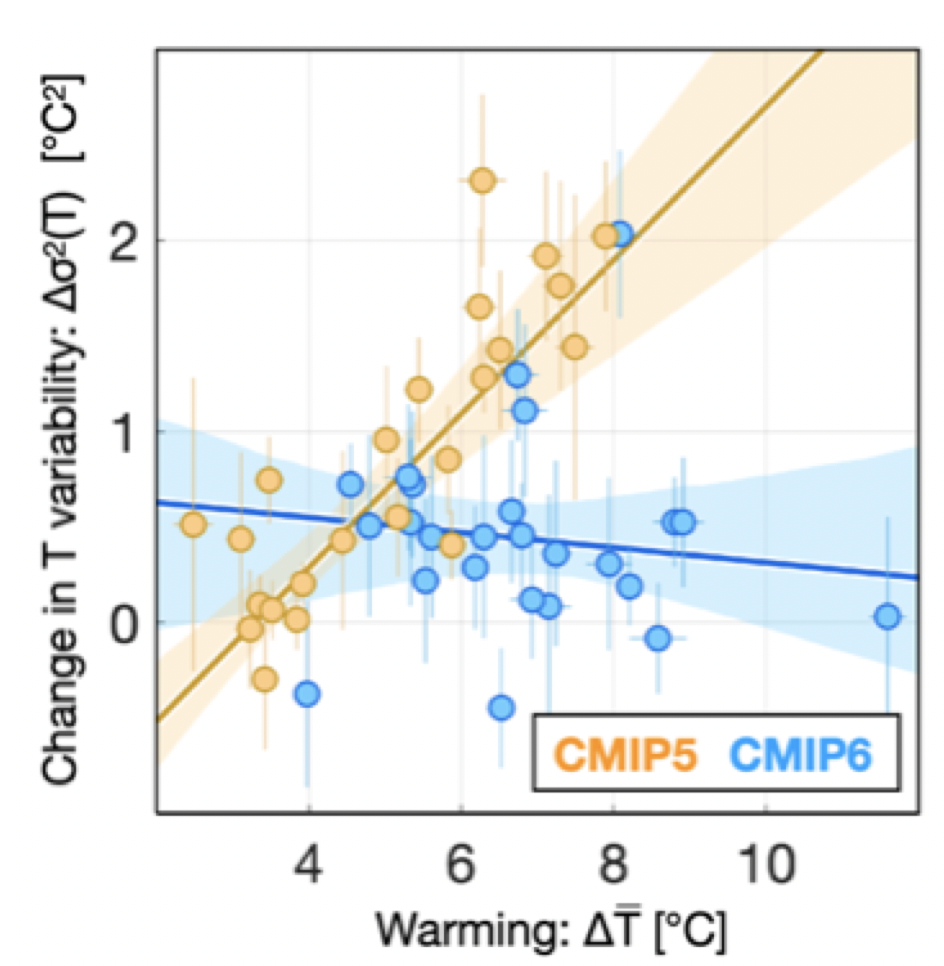Understanding changes in the statistical distribution of surface temperature over land is crucial for assessing climate-related risks.
In Western Europe, whereas an earlier model ensemble (CMIP5) suggests a substantial increase in temperature variance that increases with local warming (Chan et al., 2020), a more recent ensemble (CMIP6) indicates only a moderate variance increase that does not covary with warming (Chan et al., 2022).

Fig. 1 Distinct projections of warming and changes in monthly temperature variance between CMIP5 and CMIP6. Shown results are averages over Western Europe, and each dot represents a model.
These differing predictions would have distinct implications for the frequency of heatwaves, crop production, and human health. To understand the physical causes of these projections, we built a simple physical model to quantify and separate the contributions of land-air coupling from atmospheric radiative processes, with the latter involving clouds and changes in weather patterns. We found that it is the differences in radiative forcing, rather than the previously emphasized land-air coupling (e.g., Fischer et al., 2012), that explain the distinct projections between the two model ensembles (Chan et al., 2022). More details are in the video below.
- Chan D., Rigden A., Proctor J., Chan P., & Huybers P. (2022). Differences in Radiative Forcing, Not Sensitivity, Explain Differences in Summertime Land Temperature Variance Change Between CMIP5 and CMIP6. Earth's Future, 10(2), e2021EF002402. link, pdf
- Chan D., Cobb A., Vargas L., Battisti D., & Huybers P. (2020) Summertime temperature variability increases with local warming in mid-latitude regions. Geophysical Research Letter, e2020GL087624. link, pdf, code & data
- Fischer, E. M., Rajczak, J., & Schär, C. (2012). Changes in European summer temperature variability revisited. Geophysical Research Letters, 39(19).